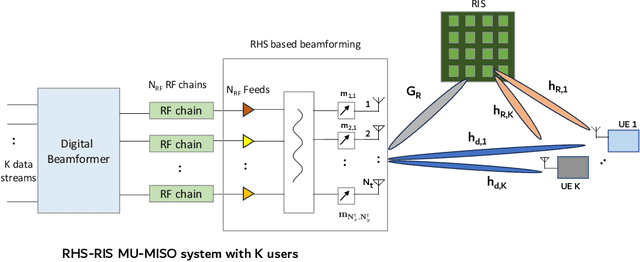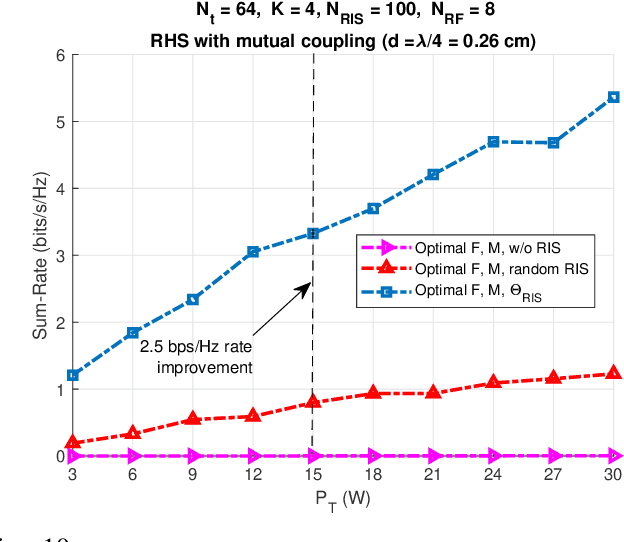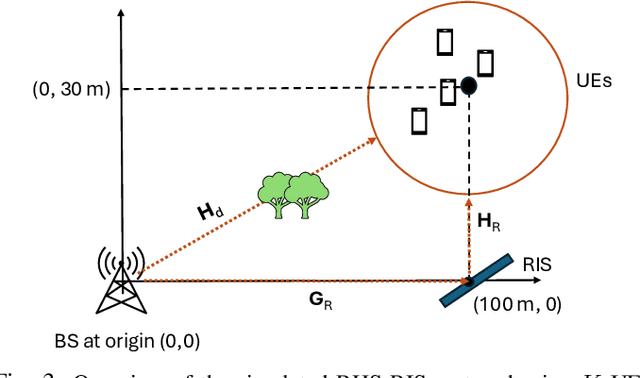Sum-Rate Maximization of RIS-Aided Digital and Holographic Beamformers in MU-MISO Systems
Paper and Code
Oct 21, 2024



Reconfigurable holographic surfaces (RHS) are intrinsically amalgamated with reconfigurable intelligent surfaces (RIS), for beneficially ameliorating the signal propagation environment. This potent architecture significantly improves the system performance in non-line-of-sight scenarios at a low power consumption. Briefly, the RHS technology integrates ultra-thin, lightweight antennas onto the transceiver, for creating sharp, high-gain directional beams. We formulate a user sum-rate maximization problem for our RHS-RIS-based hybrid beamformer. Explicitly, we jointly design the digital, holographic, and passive beamformers for maximizing the sum-rate of all user equipment (UE). To tackle the resultant nonconvex optimization problem, we propose an alternating maximization (AM) framework for decoupling and iteratively solving the subproblems involved. Specifically, we employ the zero-forcing criterion for the digital beamformer, leverage fractional programming to determine the radiation amplitudes of the RHS and utilize the Riemannian conjugate gradient algorithm for optimizing the RIS phase shift matrix of the passive beamformer. Our simulation results demonstrate that the proposed RHS-RIS-based hybrid beamformer outperforms its conventional counterpart operating without an RIS in multi-UE scenarios. The sum-rate improvement attained ranges from 8 bps/Hz to 13 bps/Hz for various transmit powers at the base station (BS) and at the UEs, which is significant.
 Add to Chrome
Add to Chrome Add to Firefox
Add to Firefox Add to Edge
Add to Edge